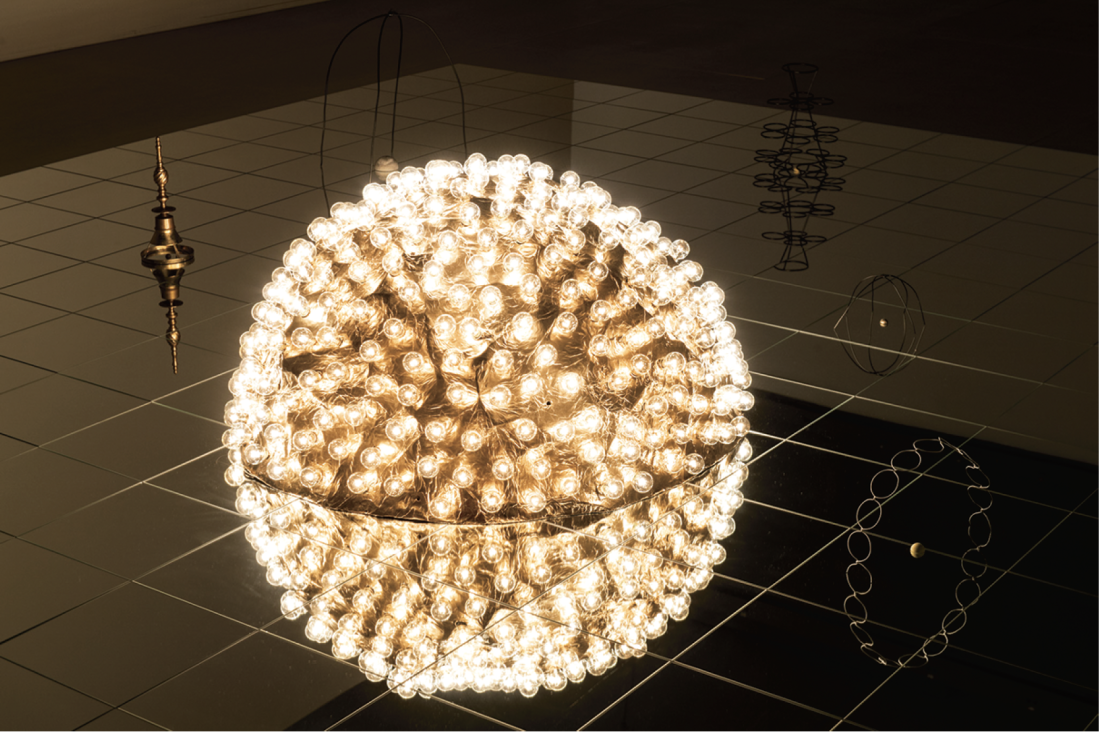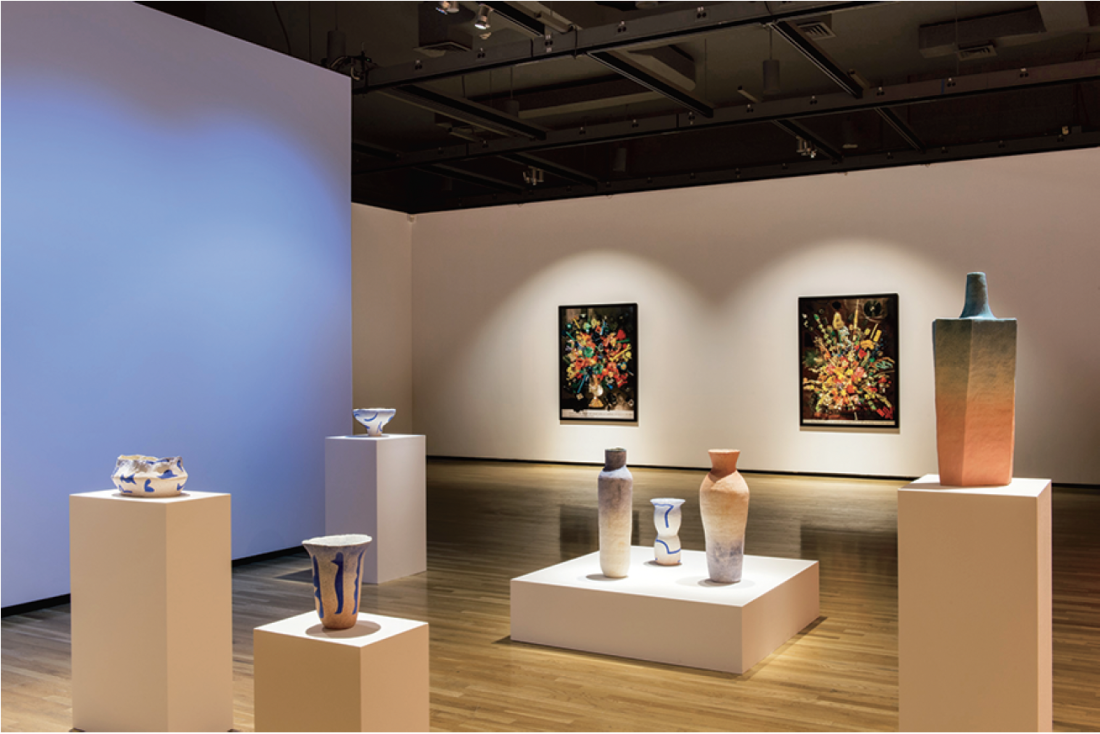“things you can’t unthink”
On February 11, 2016 an announcement was made that evidence of gravitational waves had been detected by the LIGO Scientific Collaboration group, confirming for the first time Einstein’s prediction of a universe that would stretch time and space in the wake of a significant cosmic event. Using two monitoring centres, one in Louisiana and the other in Washington state, the LIGO group observed and confirmed a disruption in the frequency of a standard interference pattern, providing direct evidence of the gravitational waves produced during the collision and merging of two black holes 1.3 billion years ago. The discovery was immediately heralded as astrophysics’s most significant in decades and the announcement marked a radical shift in humankind’s understanding and potential examination of space-time. Prior to this detection, the long-range exploration of space by humans had primarily been limited to the search for waves of light, an observational analysis that renders anything that doesn’t produce an illuminated artefact unseeable. What this confirmation ushers in is a new era of stargazing not contingent upon any sensual evidence, allowing future explorations of space and time to exceed the natural capabilities of our human bodies.
A similar investigation is currently underway in a relatively new category of theories known as New Materialism, which too seek to know the world beyond those phenomena typically available to human sensory perception. In many ways this burgeoning field is motivated by questions asked in earlier manifestations of Materialist thinking, advancing previous considerations of how we come to know the things in our physical environment if they often appear different than they really are. Though approaches vary, a core tenant of New Materialist thought argues that matter possesses its own vibrant energy independent of human cognition, and that it is capable not only of generating its own shape and form, but that in so doing it noumenally affects the world around it. It is from this vantage that the exhibition “things you can’t unthink,” curated by Peta Rake at the Walter Phillips Gallery in Banff, AB, brings together the work of four artists, Sara Cwynar, Eunice Luk, Virginia Lee Montgomery and Erica Prince, identifying strong sympathies to this inquiry running through their work. True of each is the presence of an internal organizational or conceptual logic that operates distinct from the outside world, though it affects outward while generating its own shape and form.

Erica Prince, Released From Orbit, 2012, detail. Photograph: Rita Taylor. All photographs courtesy Walter Phillips Gallery, The Banff Centre.
Exemplary of this is Erica Prince’s Released from Orbit, 2012, which avoids any anthropocentric trappings by exiting Earth’s atmosphere altogether, instead directing a speculative gaze toward outer space. The particular planets of Prince’s interest are those that too have exited, in this case, their original cosmic coordinates, or those celestial bodies no longer beholden to the gravitational pull of a particular star, leaving them free to roam the universe untethered. Dimly lit and occupying a room by itself toward the back of the exhibition space, the installation takes the form of a constellation of rogue planets, each encaged by a semi-circuitous structure built of glazed ceramics, wire, found objects, plaster or papier mâché—architectural mutations produced in the absence of any sun. Arranged upon a grid of mirrors, their placement on the reflective surface completes the encircling, providing an adamant atmosphere for each as they effortlessly wander between the perceptual and material world.
While Prince’s inquiry is galactic in its scale, Virginia Lee Montgomery’s Ideation Accelerator Mobile, 2015, focuses its inquiry upon the subatomic, where human identities dissolve into other objects, thoughts included. The work, assembled using parts from the Van de Graaff Particle Accelerator, is suspended at the front of the exhibition, proposing itself as mobile-becoming-dream machine. An accompanying video shows Montgomery setting the mobile in motion, each revolution potentially generative of new ideas and images.

Installation view, “things you can’t unthink,” 2016, Walter Phillips Gallery, The Banff Centre. Photograph: Rita Taylor.
Though the above inquiries occur at scales abstracted from human life, a significant faction of New Materialist investigations is intimately tied to life on Earth, extending that definition in the panpsychic tradition to both the organic and non-organic. In the case of Sara Cwynar’s photographic compositions, Contemporary Floral Arrangement 1 & 2 (both 2013), this is revealed as the inorganic (colourful spools of thread, plastic toys, discarded camera equipment) seemingly self-organizing into representations of lush floral still lifes in Cwynar’s studio, which are there flattened back into photographs. Likewise, Eunice Luk’s ethereal installation of prints and ceramics possess their own life force, silently signalling from the plinth to the wall and back. In each there is the sense that it is the objects themselves that have dictated their final form, asserting their agency as they recompose and draw the world near.
As New Materialist discourse develops there is every chance that it transforms into something more rigid and dogmatic, but in its currently malleable manifestation it provides opportune territory for those artists frustrated with the limits of sense-data and structural hierarchies, and who share with it a desire for the reorganization of disciplinary boundaries and identities. The exhibition “things you can’t unthink” focuses upon these sensibilities within the previously described works, drawing to the fore their advocacy of the noumenal over the phenomenal. As science develops new methods to investigate the unseeable, both earthly and extraterrestrial, it is quite possible that this manner of qualitative research will increasingly find quantitative support, with the detection of gravitational waves perhaps serving as an early signal of this future. At the very least, their detection serves as a reminder that any worldly integrity we take for granted is an illusion, and that at any moment our minds and bodies might collectively be bent under the cover of darkness toward the unknown.❚
“things you can’t unthink” was exhbitied at the Walter Phillips Gallery, Banff, from January 23 to May 22, 2016.
Aryen Hoekstra is an artist based in Toronto. He is a Contributing Editor at Towards.info and currently serves as the director of G Gallery.

